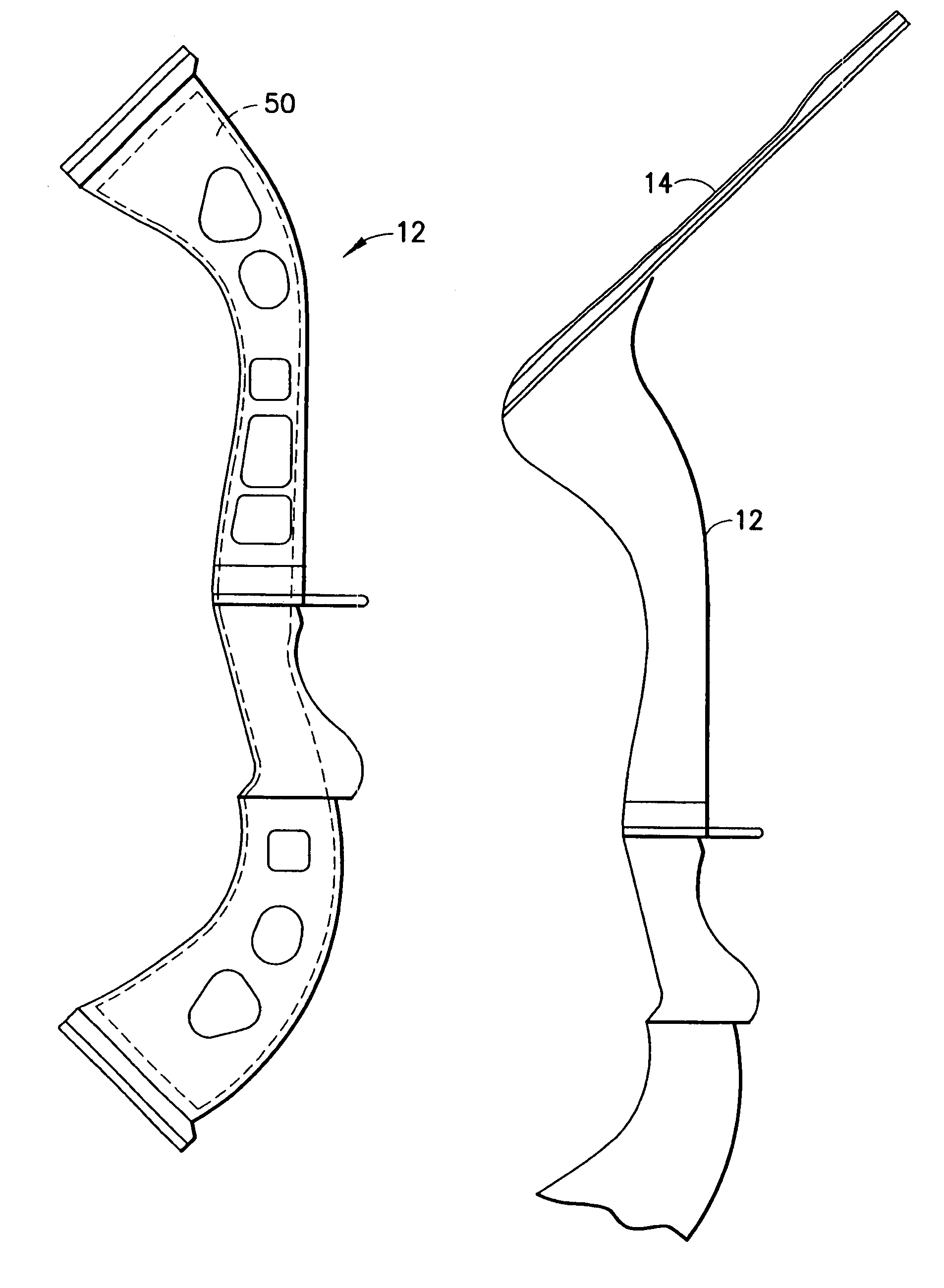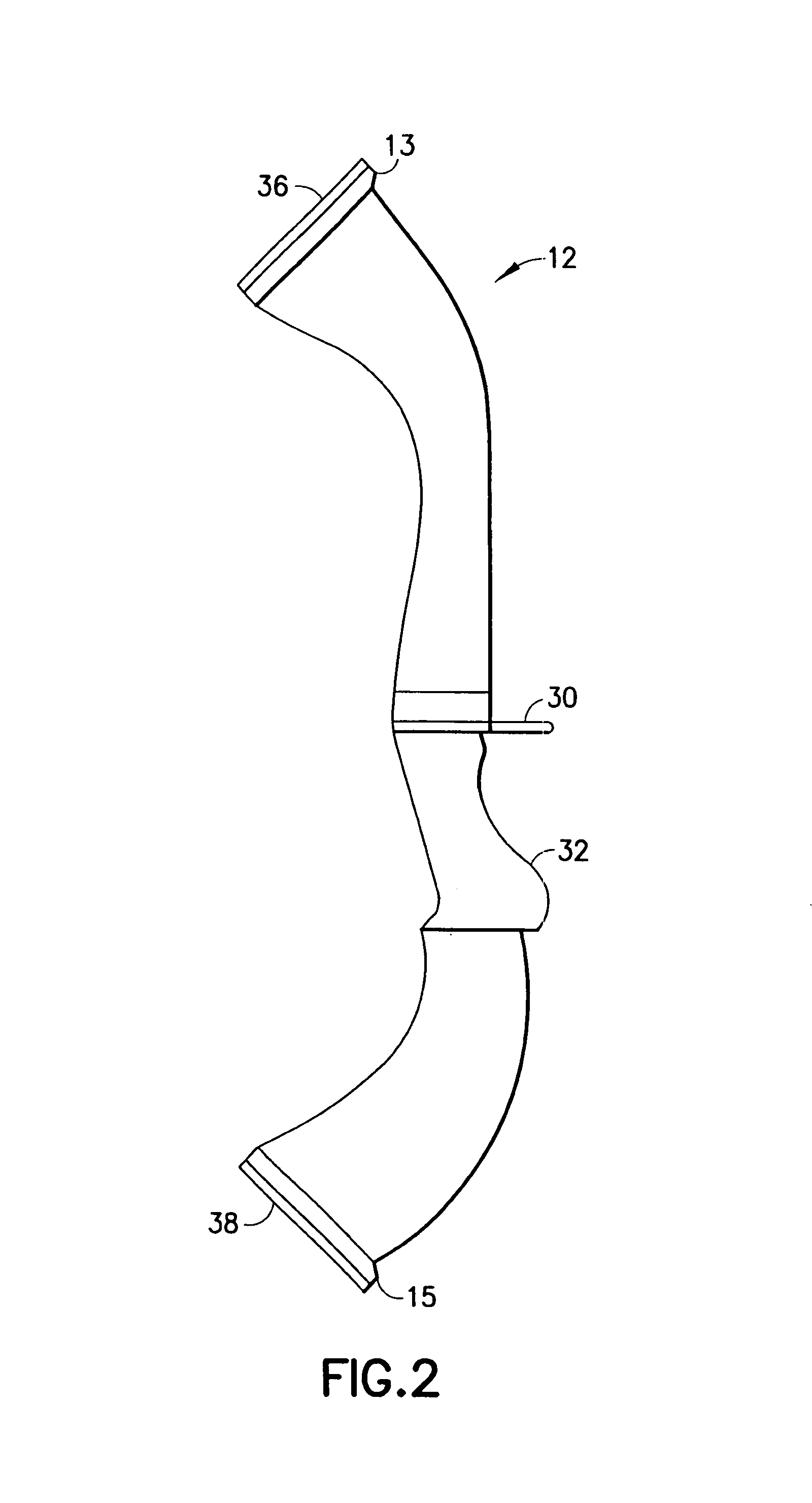Thermoplastic composite bow riser, limb, and cam
a composite bow and riser technology, applied in the field of archery bows, can solve the problems of compromising the structural integrity of the bow, affecting the useful life of the bow, and requiring a great deal of force to draw the bowstring back, so as to reduce the overall stress of the bow, prolong the useful life of the bow, and reduce the stress at the joints between the riser and the limbs
- Summary
- Abstract
- Description
- Claims
- Application Information
AI Technical Summary
Benefits of technology
Problems solved by technology
Method used
Image
Examples
Embodiment Construction
[0022]Referring to FIG. 1, one embodiment of a compound archery bow is shown generally at 10 and is hereinafter referred to as “bow 10.” Bow 10 includes a riser 12, an upper limb 14 attached to an upper portion of the riser, a lower limb 16 attached to a lower portion of the riser, and a string arrangement connected between a pulley 18 and a cam 20 mounted to the distal ends of the upper limb and the lower limb, respectively. The string arrangement includes a string that is wound around the pulley 18 and the cam 20 to define a harness system 22 and a drawstring 26, a portion of which is receivable in the nock of an arrow. The drawstring 26 can be pulled back from the riser 12 in order to launch the arrow.
[0023]During use, tension, compression, and torque is exerted on the riser 12, the upper limb 14, and the lower limb 16 as the drawstring 26 is pulled back. Flexure of the upper limb 14 and the lower limb 16 stores energy in the bow 10, which is released when an arrow is launched, c...
PUM
| Property | Measurement | Unit |
|---|---|---|
| tension | aaaaa | aaaaa |
| force | aaaaa | aaaaa |
| torsional forces | aaaaa | aaaaa |
Abstract
Description
Claims
Application Information
 Login to View More
Login to View More - R&D
- Intellectual Property
- Life Sciences
- Materials
- Tech Scout
- Unparalleled Data Quality
- Higher Quality Content
- 60% Fewer Hallucinations
Browse by: Latest US Patents, China's latest patents, Technical Efficacy Thesaurus, Application Domain, Technology Topic, Popular Technical Reports.
© 2025 PatSnap. All rights reserved.Legal|Privacy policy|Modern Slavery Act Transparency Statement|Sitemap|About US| Contact US: help@patsnap.com



